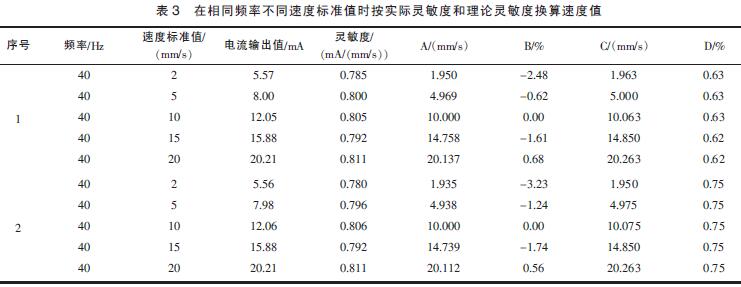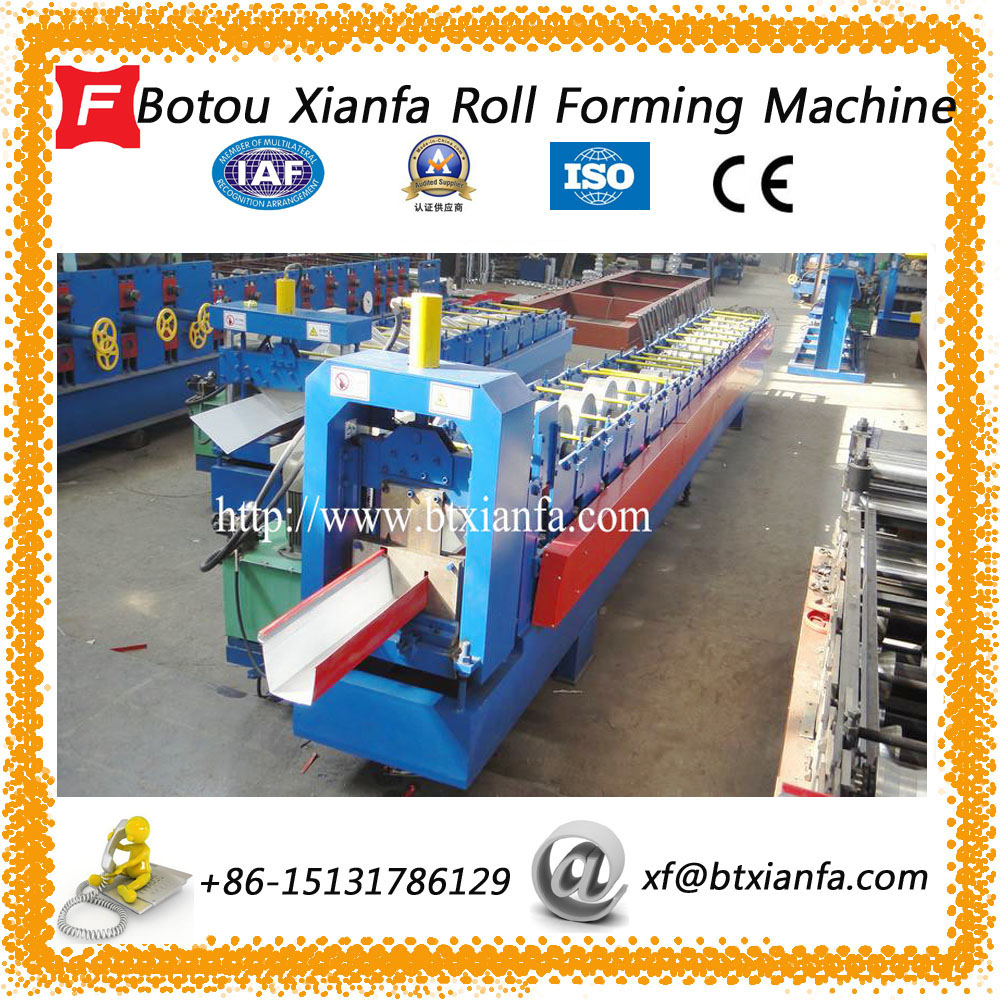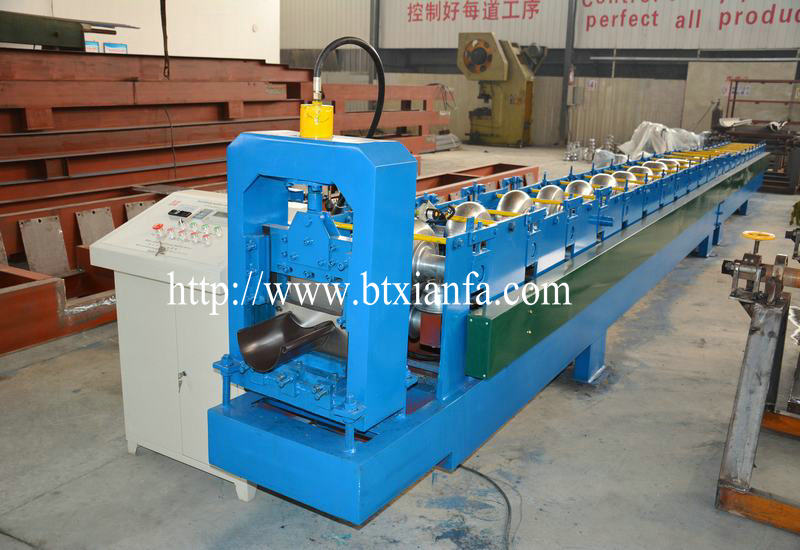Abstract: The effect of the sensitivity value on the measurement result when measuring with a vibration velocity transmitter is described. Combined with the measurement characteristics of the vibration velocity transmitter, the velocity measurement value converted using the theoretical sensitivity value and the actual sensitivity value is performed. By comparison, the results show that the correct measurement accuracy can be improved by using the actual sensitivity value of the vibration speed transmitter. Keywords :Vibration velocity transmitter; Frequency response; Sensitivity In the light industry, the demand for large-scale equipment vibration speed monitoring is increasing. The traditional magnetoelectric speed sensors for measuring the vibration speed are quickly replaced by vibration speed transmitters. Nowadays, there are many integrated vibration speed transmitters on the market. This type of device integrates a speed sensor and a transmitter , and outputs a current signal of 4 to 20 mA. It is connected to a secondary instrument and can easily measure the vibration speed. In most current users' vibration velocity transmitter measurement systems, the sensitivity value of the vibration velocity transmitter is not changeable. The theoretical sensitivity value is set in the entire measurement system, but each vibration velocity is transmitted. The sensitivity value of the device is not the same. If the user measures the vibration velocity transmitter according to the theoretical setting value, the measurement result will be biased. Through the comparison of the data in this paper, users can learn more about how to correctly use the vibration speed transmitter and improve the accuracy of the measurement results. 1 The measurement characteristics of the vibration velocity transmitter are the same as those of the conventional magnetoelectric velocity sensor. The main measurement characteristic of the vibration velocity transmitter is the frequency response. The vibration frequency generated during the operation of the equipment is very different. When using the vibration speed transmitter to measure the vibration speed, if you can know the sensitivity value of the vibration speed transmitter at different frequencies, correct it will inevitably improve the accuracy of the measurement results. . In addition, the linearity of the amplitude is also one of the metrology characteristics. Even at the same frequency, when the vibration speed transmitter measures different vibration speeds, the corresponding sensitivity value also varies. Using the same sensitivity value to convert the speed value, the same Affect the accuracy of the measurement results. 2 Calculate the speed value according to the theoretical sensitivity value Normally, the 4~20 mA current signal output by the vibration speed transmitter corresponds to the measurement range of its vibration speed. Take the measurement range of the vibration velocity transmitter 0~20 mm/s as an example. When the vibration velocity is 0, the vibration velocity transmitter outputs a DC current of 4 mA; at the vibration velocity of 20 mm/s, the vibration velocity changes. The transmitter outputs a DC current of 20 mA, which is the theoretical condition. The theoretical sensitivity value is 0.8 mA/(mm/s). The user usually uses the vibration speed transmitter according to the theoretical sensitivity value. However, the actual sensitivity value of each vibration speed transmitter is not necessarily 0.8 mA/(mm/s). Table 1 shows the sensitivity data of 10 groups of vibration velocity transmitters measured at a reference frequency of 40 Hz. Through the test data in Table 1, we can see the deviation of the speed value converted from the theoretical sensitivity value and the speed standard value: The actual sensitivity value is not 0.8 mA/(mm/s), according to the theoretical sensitivity value conversion speed value, will bring To a certain degree of deviation. The conversion formula is: In the formula, V is the speed value; I is the current value; S is the sensitivity value. 3 When different frequencies are converted according to the actual sensitivity and the theoretical sensitivity, the sensitivity of the vibration speed transmitter may not be the same. Usually, the sensitivity value at the reference frequency is used as the sensitivity of the vibration speed transmitter. The data in 2 can be seen from the speed value converted from the reference sensitivity and the speed value converted from the theoretical sensitivity. Table 2 uses 40 Hz as the reference frequency point, A represents the speed value converted from the actual sensitivity value, B represents the deviation of the speed measurement value from the other frequency point and the reference frequency point speed measurement value, and C represents the measured value converted from the theoretical sensitivity value; D shows the deviation of the speed theoretical conversion value from the actual measurement value. 4 According to actual sensitivity and theoretical sensitivity conversion speed value at the same frequency different speed standard value The amplitude linearity of the vibration speed transmitter is usually measured at the reference frequency. From the data in Table 3, it can be seen that when the speed standard value is different at the reference frequency, the speed value converted from the reference sensitivity and the speed value converted from the theoretical sensitivity are used. The contents of the letters A, B, C, and D in Table 3 are the same as those in Table 2. 5 Concluding remarks It is not difficult to see from the above data that there is a certain deviation from the theoretical sensitivity value of the vibration velocity transmitter, and that the reference velocity value is used to convert the velocity value to guarantee the accuracy of the reference frequency velocity value. Vibration frequency transmitter frequency response characteristics. Through the calibration of the vibration speed transmitter, the user can more accurately use the vibration speed transmitter to monitor and effectively grasp the running status of the equipment. I hope this article can be helpful to users who use vibration speed transmitters. There is something wrong with them and they are welcome to criticize and correct me. This article is provided by three smooth meters http://, reproduced please indicate the copyright.
Round Gutter Roll Forming Machine, Gutter Making Machine , Gutter Machine Price ,Rain Gutter Roll Forming Machine, Raingutter Roll Forming Machine, Rain Gutter Machine
Quick Detail
1.Suitable to process: Color steel plate
2.Width of the plate: 333mm
3.Rollers: 23rows
4.Dimensions: 10.7*1.35*1.51m
5.Power: 3+3kw
6.Rolling material: high grade 45# steel(plated chrome on surface)
7.Thickness of the plate:0.4-0.6mm
8.Voltage: 380V 50Hz 3phases
9.Material of the cutting plate: Cr12
10.Hydraulic: 40#
11.Processing precision: Within 1.00mm
12.Control system: PLC control
Round Gutter Roll Forming Machine Round Gutter Roll Forming Machine, Gutter Making Machine, Gutter Machine Price,Rain Gutter Roll Forming Machine, Raingutter Roll Forming Machine, Rain Gutter Machine Botou Xianfa Roll Forming Machine Factory , https://www.rollforming.nl



